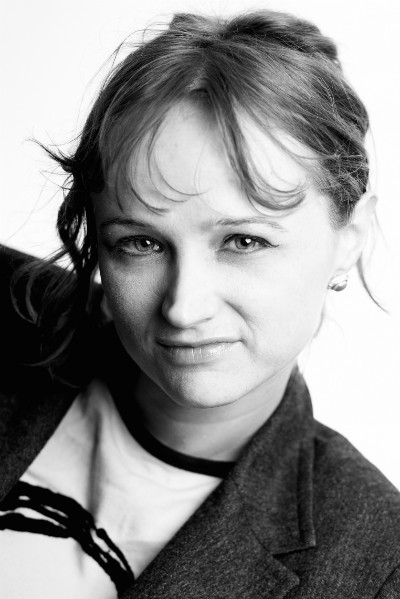
Readers who enjoy the juxtaposition of the everyday and the surreal will find much to enjoy in Angela Readman’s collection Don’t Try This At Home. There’s a woman who repeatedly bisects her paramour, creating a series of doubles of him, some of which follow wildly disparate paths in life; there’s a women who begins to become Elvis; there are jackalopes. Readman’s unpredictable, bittersweet stories can haunt and delight in equal measure. I spoke with her via email to learn more about the collection, about her process for fiction, and her history with jackalopes.
What were the circumstances of your first encounter with a jackalope? What inspired you to work them into a story?
I first saw a jackalope on a strange taxidermy site I happened to stumble across online. It really spoke to me. I didn’t know why. I typed a paragraph one day when I was busy with something else. It was one of those things I had to go back to, not knowing if there is a story to it or not. I had this plastic figure I bought in a shop for no reason, years before. It was a girl cuddling a rabbit. It was cheap and there was nothing special about it, other than the feeling it gave me, about a girl and a rabbit, clinging on to it.
In numerous stories in Don’t Try This At Home, someone close to the narrator transforms, whether it’s one man becoming several versions of himself in the title story or a mother changing into Elvis. Do you see these transformations as literal or metaphoric?
I don’t think they have to be exclusive. I write with the literal in mind. I think something like: what would it be like to be Elvis working in a take away, knowing you are awesome, you are Elvis, but you are not in a place where your best qualities can shine? That’s something that worries me, not getting the chance to do the things we’re best at, the things we love, just being in circumstances that don’t fit.
“When We Were Witches” was, for me, one of the collection’s most evocative stories. Were you looking mostly towards archetypal stories as you wrote this, or were you looking at specific folk and fairy tales for your inspiration?
I’m so glad you liked Witches, it was one of my favourites, but I had no idea where would accept something like that, so no one saw it until the book came out. I’ve always loved fairytales. I was thinking about Hansel and Gretel when I wrote the story. There’s a place called Knaresbrough where they have a petrifying well. Mother Shipton lived there. I went to see it when I was a little girl. The water makes things look stone. It fascinated me, and scared me a bit. Quite suddenly, decades later, I was in the car, going to Scotland and I had to start writing as soon as the car stopped. I had only scraps of paper and maps to write on, but I had to do it.
Do you find that your poetry and your stories overlap, in terms of their inspiration and themes?
They didn’t used to, but they do more and more. I used to keep poetry and prose very seperate, having times when I would write one form or the other only. It has changed a bit. I can write a poem sometimes that inspires a story. There will just be something about it, a setting or mood that makes me want to know more about the characters that may be just outside the poem. In the end, none of the poem actually makes it into the story, but I wouldn’t have written the story with it.
How did you go about ordering the stories that make up Don’t Try This At Home?
The ordering was surprisingly easy. Stefan Tobler (the editor at And Other Stories) and I sort of came up with it between us. I sent my manuscript with an order. He changed a couple of things, like the first story. I changed a couple back, for instance, I knew what the last story should be. We switched the odd story around until there was nothing we wanted to change.
Follow Vol. 1 Brooklyn on Twitter, Facebook, Google +, our Tumblr, and sign up for our mailing list.
